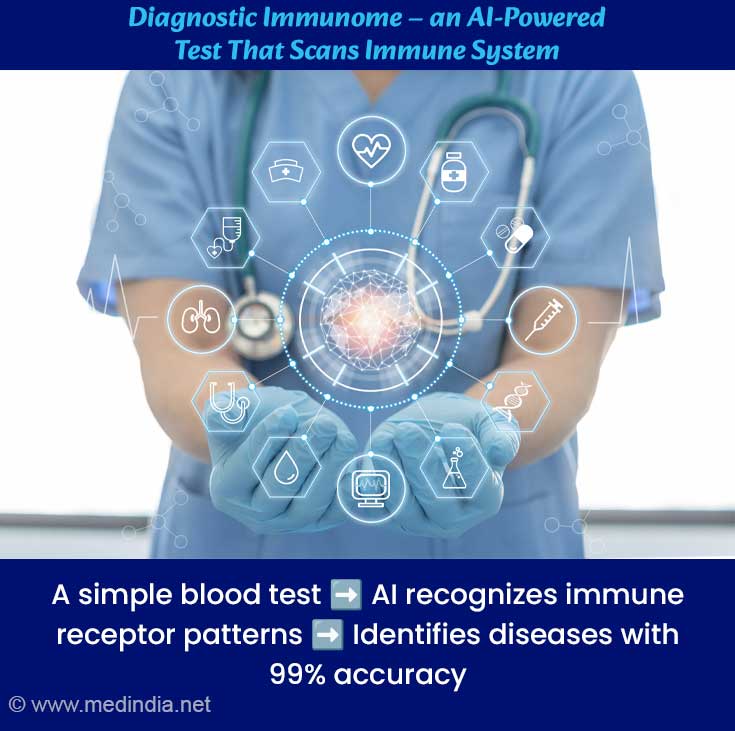Immune cells store a record of past infections. The Diagnostic Immunome uses AI to analyze this history and detect diseases like lupus and diabetes with accuracy.
- Diagnosing autoimmune diseases and infections is a long and difficult process, often requiring multiple tests
- Diagnostic Immunome uses advanced sequencing technology and artificial intelligence (AI) to analyze immune cells
- The AI models achieved 99% accuracy in diagnosing diseases
Disease diagnostics using machine learning of B cell and T cell receptor sequences
Go to source). A breakthrough called the Diagnostic Immunome can change this by using advanced sequencing technology and artificial intelligence (AI) to analyze immune cells more accurately and efficiently.
Autoimmune disease diagnosis takes an average of 4.5 years. The Diagnostic Immunome uses AI to analyze immune cells, detecting diseases earlier and more accurately. #AI #healthcare #medindia’
Understanding B and T Cells
The immune system includes B cells and T cells, specialized white blood cells that detect harmful invaders and remember past infections. These cells have receptors, which act like antennas, recognizing and responding to bacteria, viruses, and other foreign substances.Every time the body is exposed to an infection or vaccine, these receptors change, leaving behind a unique record of past exposures. By studying these receptors, scientists can determine which diseases a person has encountered and how their immune system has responded.
Challenges in Current Diagnostic Method
Diagnosing autoimmune diseases, such as lupus and type 1 diabetes, is often complex and time-consuming. On average, a patient visits four different doctors over 4.5 years before receiving an accurate diagnosis. Current diagnostic methods rely on expensive tests and general immune markers, such as the neutrophil-to-lymphocyte ratio, which only provides a rough estimate of immune activity. This new technology aims to replace these outdated methods more precisely and efficiently.
How the Diagnostic Immunome Works
A research team led by Maxim Zaslavsky has developed a new method called Machine Learning for Immunological Diagnosis (Mal-ID), which uses AI to analyze immune receptor patterns.The process involves collecting a small blood sample from the patient, sequencing the genetic material of B and T cell receptors using specialized technology, and then analyzing these receptor patterns with machine learning models. The AI compares the sequences to known disease markers, identifying both past and present diseases with high accuracy.
The study analyzed blood samples from 593 individuals. The AI models achieved 99% accuracy in diagnosing certain diseases and were able to distinguish between conditions such as lupus and type 1 diabetes. The system was also faster and more reliable than traditional diagnostic methods.
This new method offers several key advantages:
- Diseases can be detected years before symptoms appear, allowing for early diagnosis.
- The system also significantly reduces false positives and misdiagnoses, leading to increased accuracy.
- With this approach, doctors can begin treatment sooner, improving patient outcomes, while the efficiency of the process makes it a potentially cost-effective and widely accessible diagnostic tool.
Reference:
- Disease diagnostics using machine learning of B cell and T cell receptor sequences - (https://www.science.org/doi/10.1126/science.adp2407)
Source-Medindia










